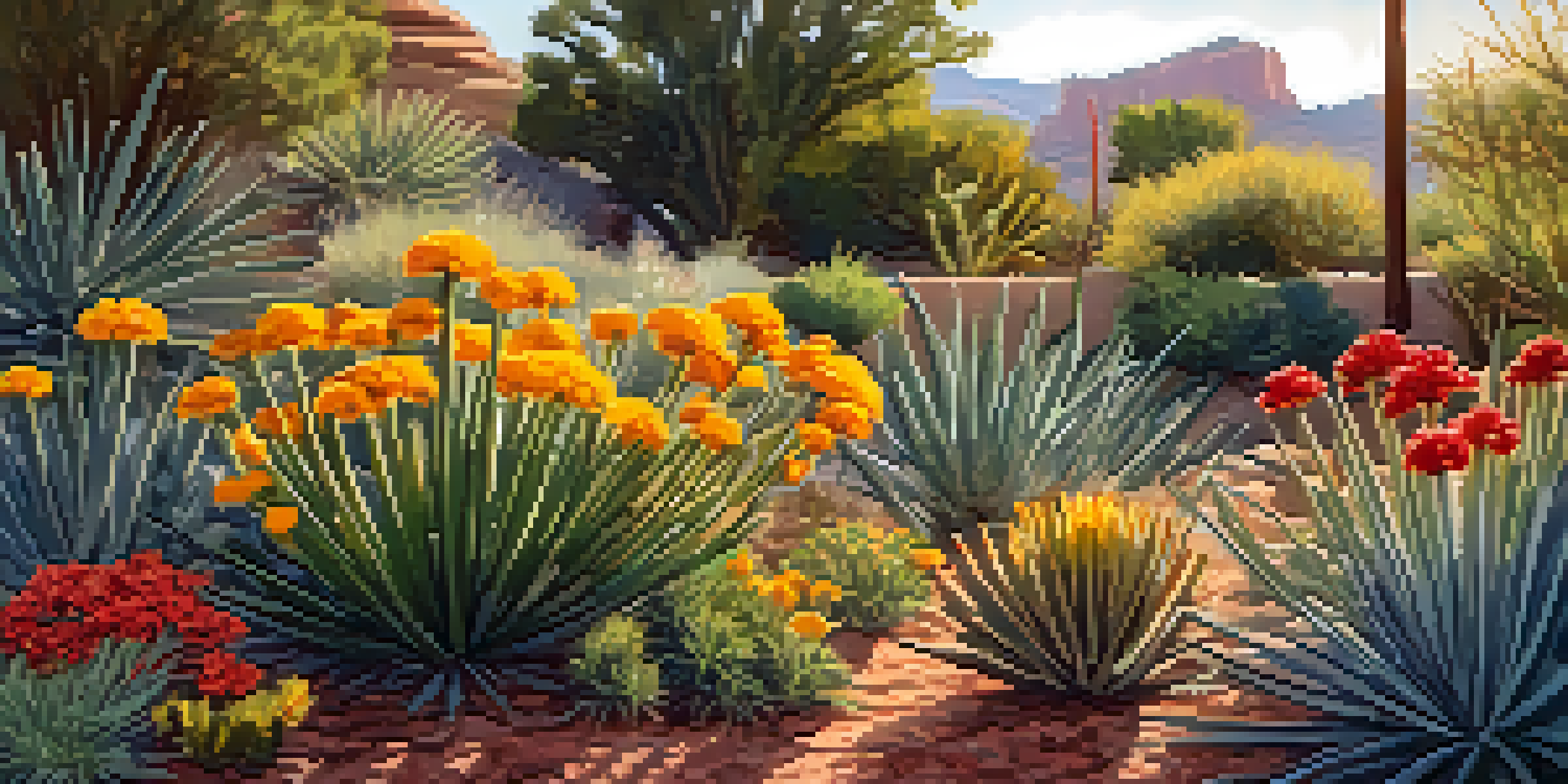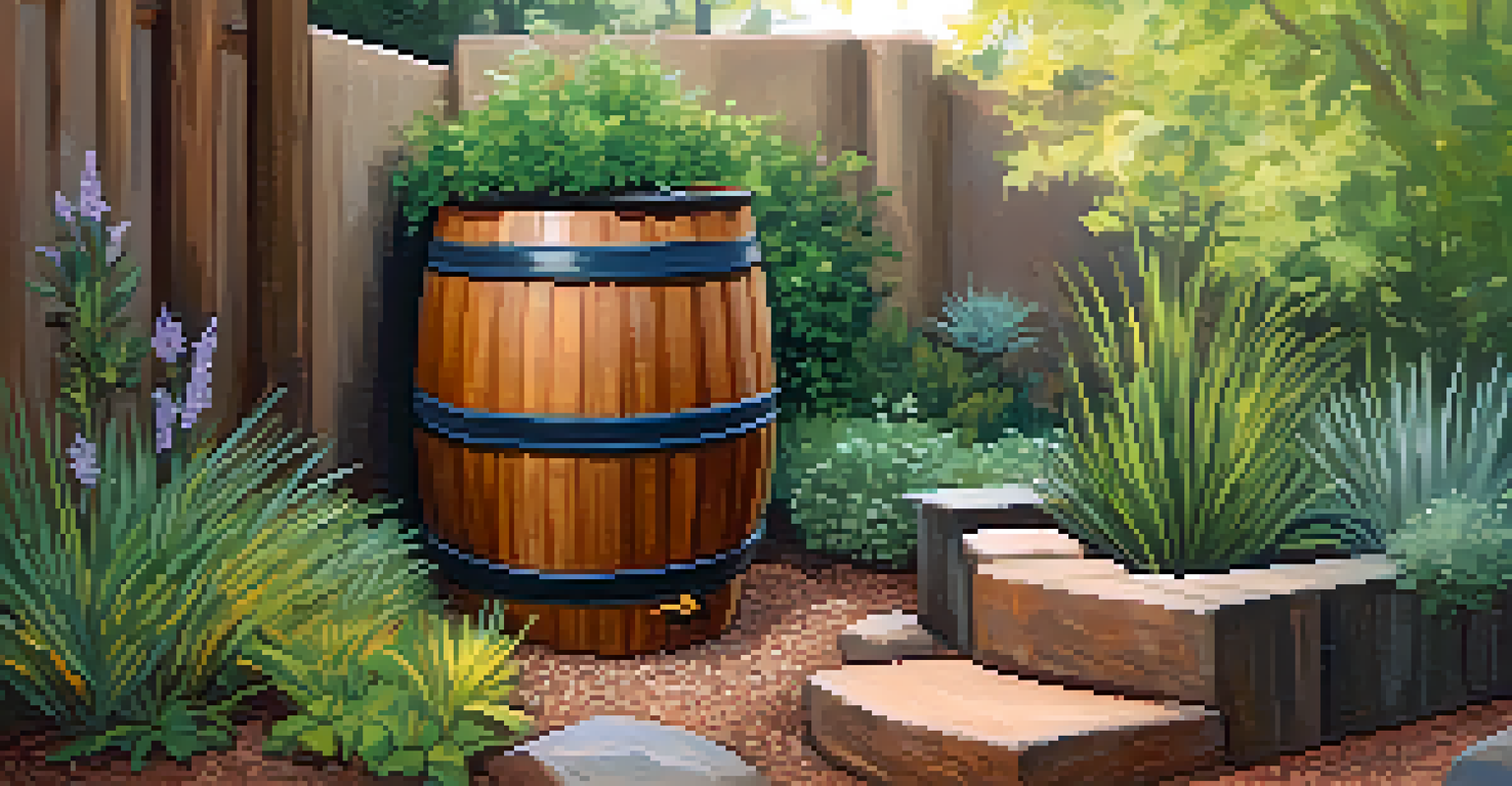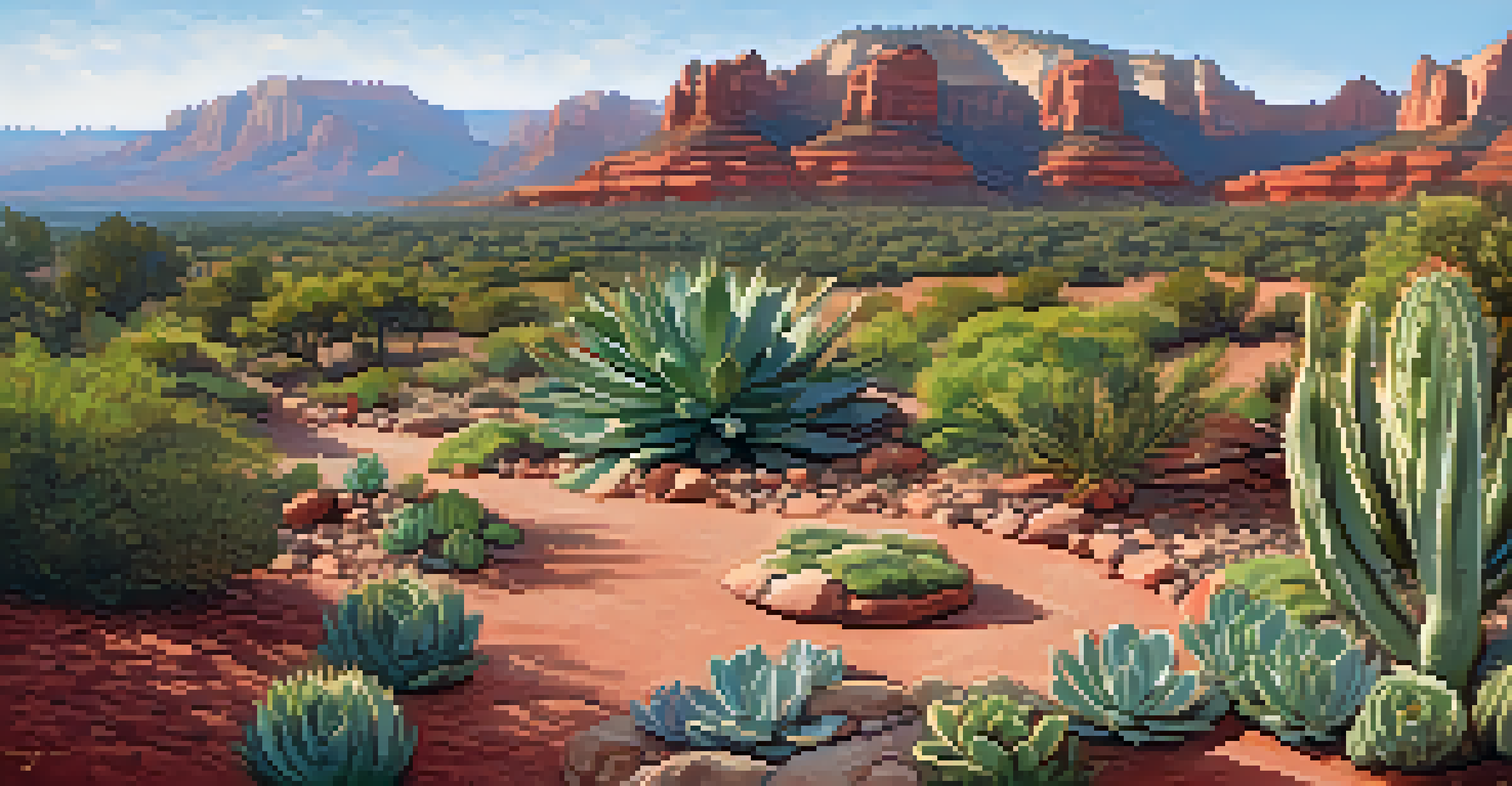Water Conservation Techniques for Sedona Gardeners

Understanding Water Needs of Sedona Plants
In Sedona's arid climate, understanding the water needs of your plants is crucial. Native plants often require less water, making them ideal choices for your garden. By selecting drought-resistant varieties, you can create a lush landscape that thrives with minimal irrigation. This not only helps conserve water but also supports local wildlife that relies on these plants.
Conservation is a state of harmony between men and land.
For example, plants like the desert marigold and red yucca are not only beautiful but also well-adapted to Sedona’s dry conditions. When planting, consider grouping plants with similar water needs together. This practice, known as hydrozoning, simplifies watering and reduces overall consumption.
Ultimately, knowing your plants' needs allows you to create a sustainable garden that flourishes with the natural rhythm of Sedona's environment. This awareness is the first step in making informed decisions that benefit both your garden and the planet.
Implementing Drip Irrigation Systems
One of the most effective ways to conserve water in your garden is by using a drip irrigation system. Unlike traditional watering methods, drip irrigation delivers water directly to the roots of the plants, minimizing evaporation and runoff. This targeted approach ensures that your plants receive the moisture they need without wasting precious resources.

Setting up a drip system might seem daunting, but it can be quite straightforward. Many local garden centers offer kits designed for beginners, which include everything you need to get started. Once installed, these systems are easily adjustable, allowing you to tailor the water output as the seasons change.
Choose Drought-Resistant Plants
Selecting native, drought-tolerant plants helps create a sustainable garden that thrives in Sedona's arid climate.
By reducing water waste, drip irrigation not only benefits your garden but also contributes to the overall conservation efforts in Sedona. It’s a win-win situation that helps you maintain a thriving garden while being mindful of our water supply.
Utilizing Rainwater Harvesting Techniques
Rainwater harvesting is an excellent way to supplement your garden's water supply while conserving resources. By collecting rainwater from your roof and directing it into barrels, you can store this valuable resource for dry days. This method not only reduces your reliance on municipal water but also helps manage stormwater runoff.
The greatest threat to our planet is the belief that someone else will save it.
To get started, install a rain barrel at the base of your downspout. Make sure to use food-grade barrels to prevent contamination, and consider adding a filter to keep debris out. You'll be amazed at how quickly these barrels fill up during a rainstorm, providing you with a sustainable watering option.
Additionally, using rainwater is beneficial for your plants since it is free of the chemicals often found in tap water. By incorporating rainwater harvesting into your gardening practices, you're actively participating in environmental stewardship while beautifying your space.
Choosing Mulch to Retain Soil Moisture
Mulch is a gardener's best friend when it comes to conserving water. By covering the soil with a layer of organic material, such as wood chips or straw, you can help retain moisture and regulate soil temperature. This protective barrier reduces evaporation, meaning your plants can access water for longer periods.
In addition to its moisture-retaining properties, mulch also suppresses weeds that compete for water and nutrients. This means less time spent weeding and more time enjoying your garden. Plus, as the mulch breaks down over time, it enriches the soil with organic matter, promoting healthy plant growth.
Utilize Efficient Irrigation Systems
Implementing drip irrigation systems conserves water by delivering moisture directly to plant roots, reducing waste.
Applying mulch around your plants is a simple yet effective way to enhance your garden's overall health while conserving water. It's a small investment that yields significant benefits, making it a must-have technique for Sedona gardeners.
Implementing Smart Watering Practices
Smart watering practices can significantly reduce water consumption in your garden. One way to optimize your watering routine is by using a moisture meter, which helps determine when your plants actually need water. This prevents overwatering, which can lead to plant stress and wasted resources.
Additionally, consider watering your garden during the early morning or late evening hours. This timing reduces evaporation caused by the sun's heat, ensuring that more water reaches the roots where it's needed most. Grouping your watering around cooler parts of the day also makes it easier to remember.
By being mindful of when and how you water, you can create a more efficient irrigation routine. This not only conserves water but also keeps your plants healthier, allowing you to enjoy a thriving garden with less effort.
Incorporating Xeriscaping Techniques
Xeriscaping is a landscaping strategy that focuses on water-efficient gardening. This technique is particularly beneficial in Sedona, where water scarcity is a concern. By incorporating drought-tolerant plants, rock gardens, and native species, you can create a visually appealing landscape that requires minimal watering.
The beauty of xeriscaping lies in its versatility—there are countless design options available. For example, you can use gravel paths interspersed with colorful succulents to create a stunning visual contrast. This not only conserves water but also enhances your outdoor space's aesthetic appeal.
Engage with Local Gardening Community
Connecting with fellow gardeners fosters knowledge exchange and inspires new water-saving strategies for sustainable gardening.
By embracing xeriscaping, you're making a conscious choice to reduce water usage while still creating a beautiful garden. It’s a sustainable approach that aligns perfectly with the natural beauty of Sedona's landscape.
Engaging with the Gardening Community
Engaging with fellow gardeners is a fantastic way to share knowledge and resources on water conservation. Local gardening clubs or online forums provide platforms for exchanging tips, experiences, and even plants. Learning from others who share the same environmental concerns can inspire new ideas and techniques for your own garden.
Consider attending workshops or community events focused on sustainable gardening practices. These gatherings not only offer valuable information but also foster connections with like-minded individuals who are passionate about preserving Sedona's natural beauty. This collaborative spirit can lead to impactful water-saving strategies.

By becoming an active participant in your gardening community, you contribute to a culture of sustainability. Together, you can share successes and challenges, ensuring that water conservation remains a priority for all Sedona gardeners.
Monitoring and Adapting Your Water Usage
Monitoring your garden's water usage is essential for effective conservation. Keep track of how much water you use and the results you achieve with different techniques. This data will help you identify what works best for your garden and where improvements can be made.
Additionally, be open to adapting your practices as seasons change and plant needs evolve. For instance, you may find that certain plants thrive with less water during the cooler months. By staying attuned to your garden's requirements, you can optimize your watering strategy throughout the year.
Ultimately, the key to successful water conservation lies in continuous learning and adaptation. By regularly assessing your practices and making necessary adjustments, you can cultivate a thriving garden while being a responsible steward of Sedona's water resources.